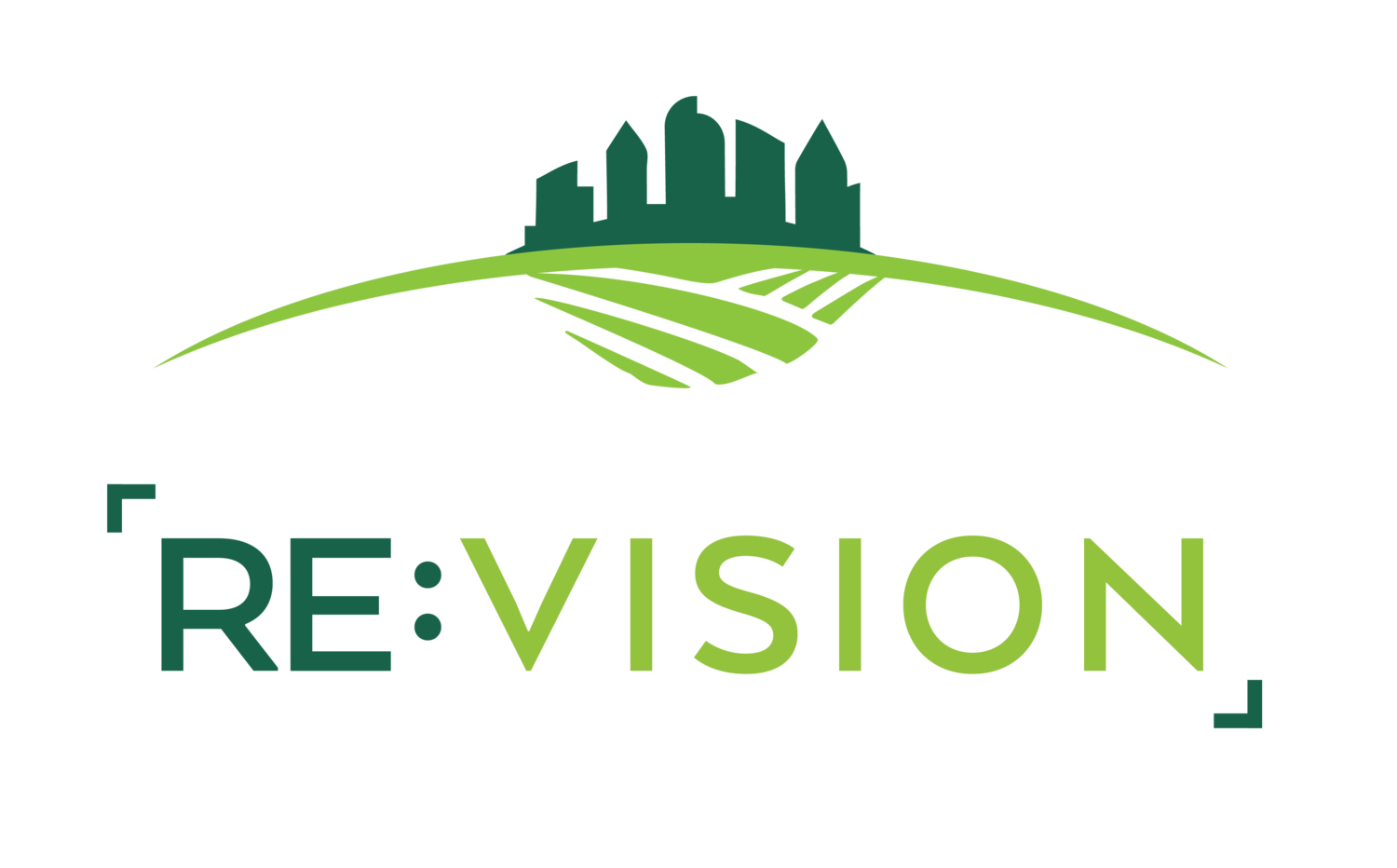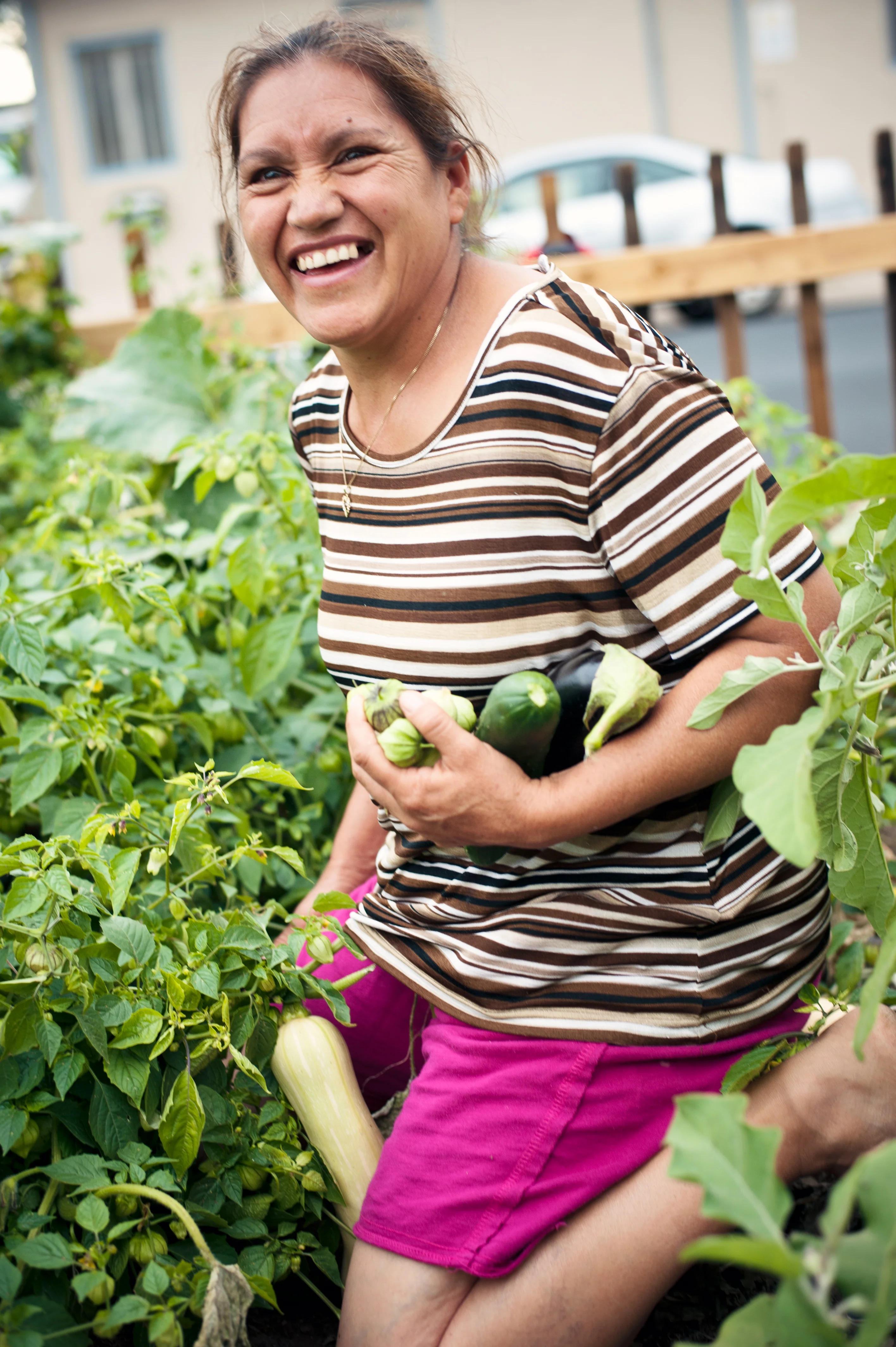
Re:Write
STORIES FROM THE FIELD, PROMOTORA RECIPES, AND CO-OP DEVELOPMENT LESSONS (PLUS SOME POLITICS AND HUMOR, TOO)
Light and Art: An exploration of Guadalupe with Cal Duran
Cal Duran remembers the first time he saw the Virgin of Guadalupe in a church in North Denver as a child. He was captured by her motherly spirit and the glowing light surrounding her. When he was sixteen, he painted a mural of Guadalupe on his bedroom wall. “On my journey of making art, she has always been present,” he says, gesturing to the plethora of Guadalupe pieces in his Denver art studio.
In 2017, Cal was invited to paint a large mural of La Virgen in Westwood, and the piece has become a staple in the neighborhood. She glitters in the sunlight, a visual representation of the light and energy she carries with her. Cal had never done a mural of this size before, but he felt Guadalupe calling to him as a protector of the Westwood neighborhood because of her universality and the way she resonates with so many.
You don’t have to be religious to connect to Guadalupe. Cal connects to the energy and power she carries, and her presence as an earth mother. We all have a light inside of us, he states, and she is the gateway to that. She is surrounded by stars and sitting on the moon in an ethereal glow. He hopes that those who see his art are captured by her magical feel and her universal elements.
For Cal, art has been a way to discover his own cultural identity, teach others, and to listen to the call of his ancestors. Those who came before him guide him in his practice, which includes clay, painting, paper mache, and a variety of mixed media.
“Art has the ability to take you to a different realm and support you in the healing process,” Cal shares as he adds clay to a life-size Guadalupe sculpture he is creating. This particular piece is a mix of clay and paper mache and will be used for an altar and processional at Re:Vision’s upcoming art gallery, Symbols and Miracles of The Lady of the Stars: A Tribute to Our Lady of Guadalupe. He hopes that visitors will look this sculpture in the eye and feel her light and draw.
Visit the show and gallery November 29th through January 3rd to see Cal Duran’s work, including the life size sculpture, paintings, prints, ceramics, and more!
Cal Duran works on a sculpture of Guadalupe for Re:Vision’s upcoming show
Zip Code Blues
While many people are turning to genetics to learn more about their health and propensity for disease, a growing field of study shows that your zip code is equally - if not more - important.
Does where you live determine how long you will live? There’s no doubt about it. Research by the Center for Disease Control (CDC) and more locally, from the Colorado Department of Public Health and Environment (CDPHE) confirm that yes - the life expectancy of one county or zip code to the next can differ by years, or even decades. For instance, life expectancy in Denver County is 5 years less than the Colorado average. Disparities among Denver neighborhoods are even more shocking - here in Westwood and surrounding neighborhoods, for example, people live on average 12 fewer years than the Denver average of 75 years.
This concept has been the topic of discussion in many public health forums recently. From op eds in the Denver Post by Colorado Health Foundation president and CEO Ann Warhover, to a presentation by The California Endowment’s Dr. Iton at a Health Equity Learning Series event sponsored by The Colorado Trust, public health experts are actively examining why this unsettling trend is occurring and what to do about it. (If you are into slam poetry, you might prefer to listen to Clint Smith’s chilling description of life expectancy in his own Washington, DC zip code.)
The fact is, policies and politics shape neighborhood resources. Your neighborhood may have plentiful resources – a variety of homes that people can afford, good schools, parks, safe streets and grocery stores. In places where policies and politics don’t benefit the community, sometimes just a few blocks away, neighborhood amenities are sparse, inadequate and substandard. Per Dr. Iton’s argument, living with few resources causes a cycle of unsafe or undesirable living conditions, stress, poor lifestyle choices, and chronic disease - ultimately resulting in early death.
In partnership with organizations like The Colorado Health Foundation and LiveWell Westwood, Re:Vision has been helping residents in food desert neighborhoods of Southwest Denver work to solve their “zip code blues” by inspiring residents to take the lead in advocating for their community’s health and by teaching families how to grow their own food. As a result of our Re:Farm program, thousands of low-income Denver residents have improved their access to healthy foods as well as their relationship with food. Re:Farm participants claim that they not only eat healthier, but also, overall, feel better about their futures.
This past spring, Re:Vision became one of The Colorado Trust’s 34 Health Equity Advocacy grant recipients. We have spent the summer convening regularly with the Trust and other grantees to discuss this very zip code issue, and how we might build a stronger collective “field” of health equity advocates to better shape public policies that support healthier communities. Re:Vision is proud to work with the diverse organizations at the table to help promote the Colorado Trust’s mission of advancing the health and well-being of the people of Colorado. Stay tuned for additional posts related to Health Equity Advocacy as we advance through this process. We hope to share the wisdom we have gained and keep the discussion flowing...
Fishing Poles
We are all familiar with the well-traveled parable: “Give a man a fish, and you feed him for a day. Teach a man to fish, and you feed him for a lifetime.” But how often do we actually carry this out in the way that we view charity, the way that we approach cycles of poverty both locally and abroad? This may be easy to do on a small scale, but how do we succeed in doing it on a broad scale? And even if you teach a man to fish, he cannot fish without a fishing pole.
We are intentional about teaching people to create their own ‘fishing poles’ – that is, creating the means and resources to provide for themselves and their communities.
Transforming Families, Transforming Communities
In 2009, we began teaching families how to grow food in their own backyard in order to feed their family healthy, fresh, organic food. For most of these families, this is the only way that they can afford to eat healthy, the only way they can feed their children organic produce. We started in the Westwood neighborhood, nestled in Southwest Denver and the home to most of our family gardeners. Westwood is food desert, meaning the residents have no grocery store in their community. This, coupled with their modest economic resources, translates into an unhealthy diet. A 2009 study of the neighborhood found that 76% of adults were either overweight or obese.
From seven families in 2009, to 87 in 2011, our program more than doubled every single year. In return for providing families with the resources and technical support to feed their family, we ask that they pay the gift forward and refer another family to join the program.
In 2012 we helped 168 families learn how to grow their own food and feed their family. Over 90 percent of these families live on less that $15,000 a year – which is abject poverty. But because of our program, over 16,000 pounds of organic produce was grown this year in a community that has zero healthy food options.
But these numbers alone do not tell the real impact that our work has. Based upon data collected from 160 families this year:
- 93% said that they eat more fruits and vegetables
- 94% eat fresher food/less packaged food
- 96% cook at home more
- 84% eat more organic food
- 84% eat less fast food
This data shows that Revision’s model is having an immediate and measurable impact on a community that has the highest rate of obesity in children under the age of 18, in a community where the average household income is 50% less than the average Denver household, and in a neighborhood where this is no healthy fresh food.
The success of this program has been rapid. After 4 short years, we have built a critical foundation for a community to change. We have cultivated leaders from within, offering them a better life and new opportunities. We have helped guide a community to develop their own food system – through the production and distribution of healthy food, and through the education and job creation that encompass it. We are not just growing gardens. We’re growing community. We’re not just cultivating food. We’re cultivating potential.
And we're not content to let it rest at potential. Starting in 2013, Revision will coalesce all the momentum in the neighborhood so far - over 200 gardening families, 2 urban farms, the beginnings of a meaningful food distribution framework, and ever-deepening education - into a community-owned cooperative. This would be a separate entity, owned, led, staffed, and managed by community residents themselves. This cooperative, over a transition period of a few years, will provide economic opportunity, enhance the existing community resources, facilitate the production and distribution of food by, and for, the community, and increase the access to healthy food in a food desert. In 2013 Revision will begin by holding community meetings, recruiting and training a co-op board of directors comprised mostly of residents, and bringing together experts in cooperative development to aid in establishing a sustainable business plan and operating framework.
We'll keep you updated on the progress of the cooperative development throughout the year on this blog, so stay tuned!






